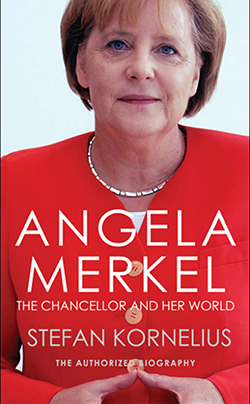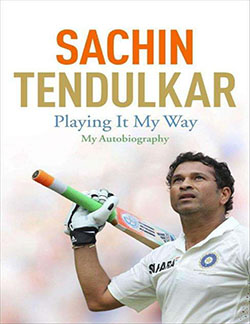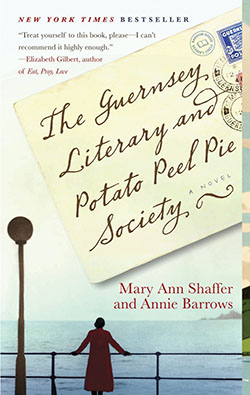And Spilling Wot I ‘Ave Lernd.
Well, the torrential rain has finally stopped. Weather is now fairly normal for this time of year … some hazy sunshine with frequent heavy showers. It’s bearable.
But; I think it’s not yet time to venture out, except for essential trips like stocking up on beer.
After about a meter or so of rain in five days, many areas, not surprisingly are still flooded. Today’s newspaper says the situation won’t start to improve for at least five more days. Water is still pouring down the rivers and streams that lead out of the mountains, and it will take some time for that to soak into the land, or run out to sea.
In the meantime, I have the unenviable task of staying home and drinking beer.
And, I can twitter about things other than travel…
Why would you give a flying fig about the books I’ve read? I’ve no idea. Maybe you’ve already hit the back button, or tapped your way off to pages greener. On the other hand, you may discover some books you’d like to read, or, given my strange tastes, books you’d rather avoid. That’s a decision you’ll have to make. I can only tell you what I think.
In no particular order…
- Angela Merkel. The Chancellor and Her World. – Stefan Kornelius.
- Rise of the Rocket Girls. – Nathalia Holt.
- Playing It My Way – Sachin Tendulkar’s Autobiography.
- Hiroshima – John Hersey
- The Guernsey Literary and Potato Peel Pie Society – Mary Ann Shaffer and Annie Burrows.

Love her or hate her, you can’t ignore her. She is probably the most powerful politician in Europe. Personally, I’m an admirer, which is no doubt is why I enjoyed this biography. I should add the word “Authorized” as this is not one of those cobbled-together bios, using newspaper articles, press clippings and a good slice of personal – often not very flattering – opinion.
It covers everything; from her upbringing in East Germany, though her youth, and on to State Dinners at the White House. Her opinions of, and relationships with the Russian hierarchy are especially enlightening.
The book is an easy read. It’s not like “Margaret Thatcher: The Autobiography.” I had to give up on that. The first third was interesting, but when it descended into the minutæ of cabinet meetings – all of them – I just couldn’t take it.
Not much more to say really. If you like the lady, you’ll like the book. And if you don’t, well, if you read the book, you might just change your mind.

In the “old days” – around the time I popped onto the planet, computers were not machines, they were people. “Computer” was a job description. You spent your day with pencils, and probably dozens of erasers, reams of paper, log tables, and if you were really lucky, a slide rule.
Most computers were women. The men, no doubt, considered themselves far too smart to spend their days calculating things. They were put on earth to have brilliant ideas. (You can see my tongue in my cheek, can’t you?)
Thus it was in the early days of rocket science.
And this book is about the early days of the Jet Propulsion Laboratory in California, which eventually became a part of NASA. It’s about the men who had the zany ideas, often blowing things up when the ideas were extra crazy, and the women who slaved for eight to twelve hours a day, six or seven days a week, trying to come up with the right calculations to make the daft ideas work.
Although the story covers all the years from the early rockets that went up and down, then launched satellites, and eventually people, both into orbit and on to the moon, it’s really about the ladies who made it happen. It’s about personalities, working relationships, pregnancies – which were strictly forbidden and therefore hidden, how families were strengthened, or more often torn apart by the rigors of the work, and how they all eventually came back together for a reunion.
I learned a lot, and enjoyed the journey.

If you know nothing about cricket, don’t even think about trying to read this book. If you are crazy about cricket, you might enjoy it. But then again, you might not.
I’m not totally mad about the sport. I enjoy watching an over or ten. There’s no way I could be glued to every moment of a five-day Test Match, but I will tune in from time to time, as I have over the past few days, to watch England making fools of themselves in India.
Sachin Tendulkar was possibly the world’s best ever batsmen, and if not, then undisputably one of the best. I enjoyed parts of his book. The stories of his early life, how he came to play the game (he’s Indian, how could he not play the game) his rise through the sport, and ultimately his captaining of the Indian side, were all of interest. But then, a bit like Maggie Thatcher’s scribblings, the book tied itself in knots of statistics. So, I confess, I didn’t finish it.
It did have a co-author, but it needed a better one. Someone who could add some personal-interest stories to the acres of “and then we went to Australia where I averaged 104 runs per inning followed by a tour of South Africa where I injured the little toe of my left foot.” Snore.
But, as it happens, I was once in the presence of the great man. Although, I mean that in a figurative sense, since he is somewhat vertically challenged. And as Twitterings is mostly a travel blog, kindly permit me twitter about a long-ago trip to Chennai…
It was July 2003. As I said, a long time ago.
The Indian tire manufacturer MRF decided to hold a celebrity kart race, and as part of that, invited a six-driver Malaysian team to compete against six Indian karters. My son, at the age of fifteen, was in the middle of his kart racing career. He was asked to be part of the Malaysian contingent, and I was asked to manage the team. It was a no-brainer. MRF paid for everything. And I mean everything.
(As an aside, so you can amaze people at your next pub quiz night, or bore people to tears at your next dinner party; as we learned on the trip, MRF stands for Madras Rubber Factory, and since Chennai was once Madras, it all fits into place.)
Now, if you love Indian food… and I’m sure you do… who doesn’t?… Well, trust me, you’ve never tasted real Indian food unless you’ve eaten it in India. Even the hotel food was stunning, and so the MRF Bean Counters must have done a double take when they saw the room service bill! For some reason, all the kart racing – even the practice sessions, was done at night – and so there was little else to do during the day but watch cricket on TV and order food.
No complaints about that – except that everything seemed to happen far too late in the day. I remember one night the qualifying session began at midnight, which was 2:30am Malaysia time (yes, India has one of those bizarre half-hour time zones, or maybe they think the rest of the world does) and I had to kick all my drivers who were fast asleep on the bleachers.
Anyhoo, one of the celebrity races was between four famous cricketers. Sachin was one of them. Shane Warne was there, and a couple of others whose names I can’t recall. Hey, I’ve been to bed a few times since 2003, and the brain cells have been recycled. Well, that’s my excuse.

Come race day we were at the circuit early. It was a scene of total chaos. Workers were everywhere. Constructing grandstands out of bamboo poles and bits of rope. Erecting billboards, which, believe it not, were all hand painted. TV crews were doing circuit inspections, working out all the best angles. Tension seemed to be high. And as the evening approached, the stands were filled with thousands of excited Indians, waiting for their hero. When Sachin finally arrived, the place erupted.

There were introductions, interviews, media frenzies, and then the “race.” Just a few laps, with Sachin leading by a country mile… until he arrived within a meter of the finish line, and had some mysterious “engine problem.” And, just as the other cricketers were sneaking up behind him, Sachin’s problem suddenly disappeared, he started moving, and he “won” the “race” by about half a meter. The place went nuts.

Prizes were presented. More speeches were made. And then everyone left. The cricketers, the spectators, the media, everyone. Only then was the not-so-great India/Malaysia match-up conducted – in silence. Except for the whine of the kart engines.
Who won? Good question. All through the practice and qualifying sessions the Indians were way faster. “Ah, we have a different surface” we were told. “Your drivers are not used to it.” Hmmm. “The karts have been randomly selected” we were assured. But whenever we tried to adjust the setups, we were told we were not allowed to touch anything.
Before the final, they held with much fanfare, a “random kart selection” session. Except that six karts had already been “randomly selected” for the Indian Team, and six “randomly selected” for the Malaysian Team. Of course, I figuratively had to don my Manager’s hat, and crank up my Managerial voice to protest. But all to no avail. Each of the sets of six had been “randomly pre-selected” I was told. And so the Indians finished in positions one to six and the Malaysians in seven to twelve.
No matter. It was free. It was fun. It didn’t count for anything other than Indian bragging rights with the media. And I can say I spent an evening with Sachin Tendulkar. Can you?
Oh, and on the last day, before our night flight back to Malaysia, the organizers thoughtfully took us by bus to the top of a hill near Chennai, which had a great view of absolutely nothing. That’s because most of India is now perpetually covered in a smoke and heat haze. But at least the small church on the hill had this helpful sign…

Although, whether burried in a burrow, or burried in a burrito, it didn’t say. At least, not in English.

This little book is a real surprise. I wouldn’t call it a nice book. The subject matter makes it a tough read. Nonetheless, it’s a must read.
The author, John Hersey was a journalist with The New Yorker magazine. Early in 1946 he was sent to Hiroshima in order to get first-person accounts from six survivors of the atom bomb.
Essentially, this is the story of what happened on that fateful day, how people felt, how they survived the first few days, and then the following six months. It’s a gruesome tale, told in a fairly-detached and emotionless manner. Told any other way, it probably would be too harrowing to read.
The following note appeared in The New Yorker of August 31st., 1946, as an introduction to John Hersey’s article…
“The NEW YORKER this week devotes its entire editorial space to an article on the almost complete obliteration of a city by one atomic bomb, and what happened to the people of that city. It does so in the conviction that few of us have yet comprehended the all but incredible destructive power of this weapon, and that everyone might well take time to consider the terrible implications of its use.”
The story never really received the circulation it deserved. Several British publications requested permission to reproduce it, but they wanted to edit and serialize it, and the author and publisher refused. Soon after the second World War, there simply was not sufficient newsprint available to print the story in its entirety.
Eventually though Penguin Books obtained the rights. And so the complete work was published unchanged, except for the adoption of English spelling conventions, and 250,000 copies were printed. The BBC also obtained permission to broadcast it.
I can’t help but wonder what effect it had. Don’t forget this was an era when communications were limited, and the only exposure the bombing would have received would have been more along the lines of military propaganda.
“Little Boy” and “Fat Man” were the bombs that ended the war. End of story. Except for those in Hiroshima and Nagasaki.
Try to obtain a copy if you can. It’s a story everyone needs to know.
My only connection to Hiroshima was at least twenty years ago when I worked on a contract at one of the Malaysian Ministries, which shall remain nameless. Mostly I sat in a glass-fronted office and was shown off as the “foreign expert.” For two years I was paid for doing next to nothing other than acting like a fish in an aquarium, shown off to visiting dignitaries.
One day I was asked to share the office with another “foreign expert” from Japan. He spoke about as much English as I spoke Japanese. But I did manage to ask him where in Japan he was from.
“Hiroshima” he said.
And you know, there really isn’t a correct response to that statement. Think about it. What would you say?
My inner-comedian wanted to say “That must be nice. Do you still glow in the dark?” but thankfully I said nothing, bowed politely in a Japanese kind of way, and sat down. That was about the extent of our conversation for three months, except for a ritual early morning bowing and exchange of “ohayou gozaimasu.”

Well, I’ve saved the strangest one for last. Actually, I have another five on the list, but this article is getting a bit long, so I’ll keep those for next month.
I confess, I had three stabs at this book, before I finally finished it. I would read twenty pages or so, and give up. My fault. But you see, not only is the title a bit unusual, the format is too.
It’s a series of letters, diary entries, telegrams, and jotted notes. Looked at superficially it seems very disjointed. But my mistake was to skip bits.
Above each letter, it states very clearly who the letter is from and to, using the names the reader would expect to see. For instance, the heading might say “From Juliet to Sophie” – characters who are known to the reader – whereas the letter, in the convention of the time, was addressed to “Mrs. Alexander Strachan.” Without the headings the story is confusing.
And what was the time? In the book, the present time is 1946. But it covers most of the war years, and although the letters jump around between London, Scotland, Australia and other places, it is mostly set on the Channel Island of Guernsey.
The Channel Islands were the only part of British territory occupied by the Germans, probably because they lie just off the coast of France, and nowhere near the UK. And, not being of any real strategic importance, Germany seemed to forget it had troops on the islands, and so both they and the inhabitants were ignored. Nothing arrived from Germany and shipments from the UK were prohibited or blown up before they arrived, and so food was in extremely short supply, hence the Potato Peel Pie part of the title.
I guess you could say it’s a story of survival, with strong literary overtones. An enjoyable read, once you get used to the format.
More to come, after some tootling.

